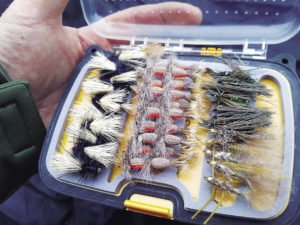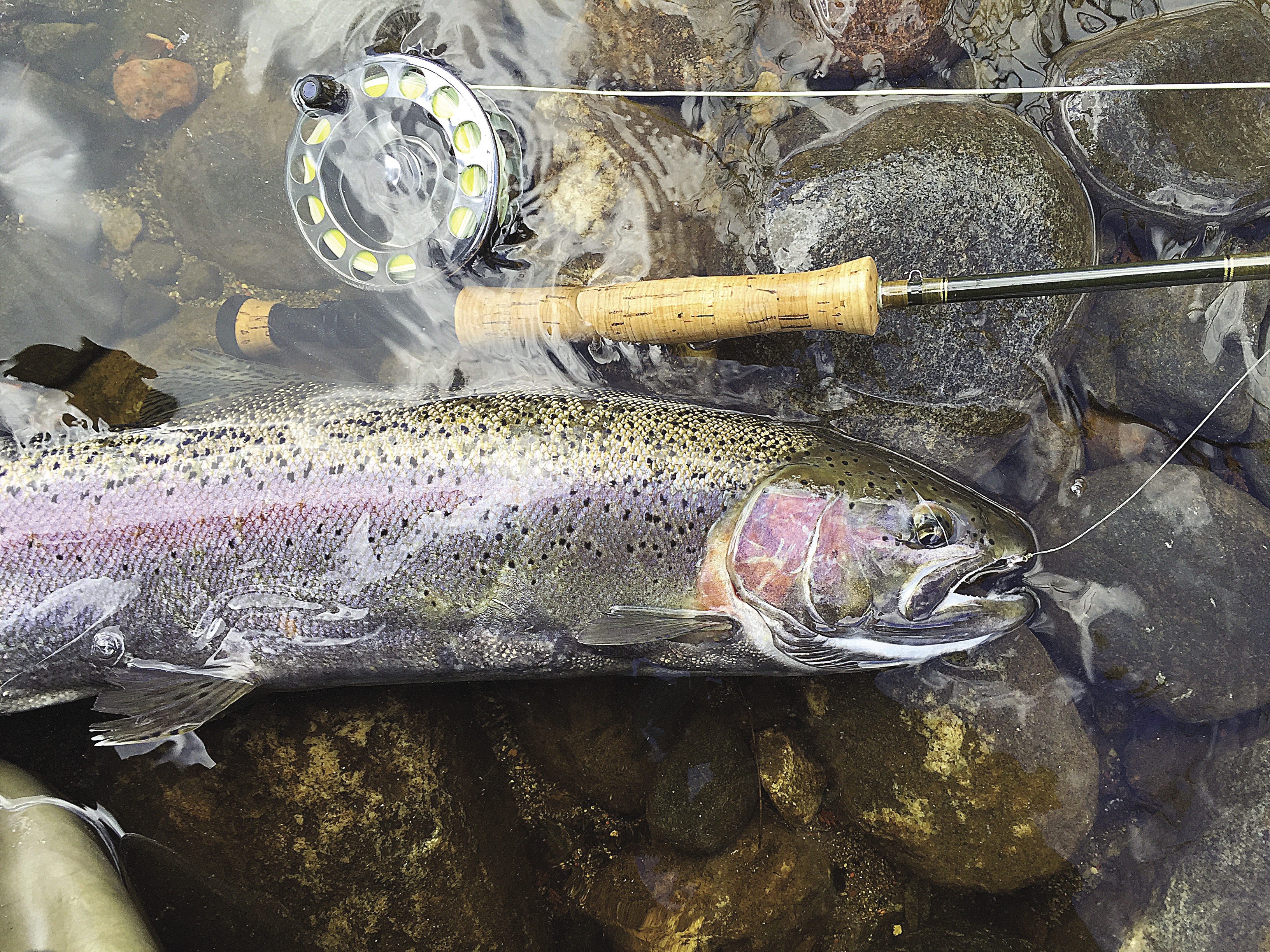Fairly recently, on a cold winter night, my wife was watching television as I tapped away on my laptop in the other room. “Come see this,” she said, and I did.
There, on the little screen, was a very young Brad Pitt, casting a reasonable loop of fly line. Soon he was fighting a make believe fish. It was the movie “A River Runs Through It.” During the part where he goes down the rapids with only his head and his hand holding the rod out of the water I said “I’ve done that.” And I have. But it never looked as pretty.
A world of people took up fly fishing after Hollywood immortalized that book on film. The movie did capture many of the elements of fly fishing that are so appealing, even if few anglers look anything like Brad Pitt while doing it.
I’ve been fly fishing for nearly as long as I can remember. My first steelhead rod was actually a fly rod and reel loaded up with monofilament instead of fly line. This set up was used to bounce heavy sinkers and flies along the bottom. It wasn’t true “fly fishing” but it was close. These days, anglers use what’s called a running line instead of monofilament to do exactly the same thing.
The progression from monofilament to real fly line took place while I was in my mid-teens. There was a tackle shop in the downtown north core of Thunder Bay called Lorne’s Camera and Fishing Tackle, and the proprietor, Lorne Allard, hooked me up with a floating fly line, some leaders and a handful of flies. “Try these for specs,” he said, dropping a half dozen Muddler Minnows in my palm. “Cast them out and then pull them back across the surface.” Seemed simple enough. So the next day, on a section of the Current River, not far upstream from Boulevard Lake, I tried out my new fly line and flies. I’d also been given a few casting tips from Lorne, but my execution was poor. However, the floating fly line had enough weight that even a bad cast got me out seven or eight feet. Far enough. My muddler fly—half submerged and looking very buggy—was then stripped back against the current. There was nothing very pretty or natural about any of it, but that didn’t stop a 10-inch brookie from leaping right out of the water to eat the fly. It was all terribly exciting. The tug of that trout on a fly line felt wonderful and to this day, it is one of my favourite experiences in fishing.

A whole other world of fly tying opened up when I joined the (now sadly defunct) Thunder Bay Fly Fishing club. What an amazing experience it was to meet a bunch of people who tied flies for fun, pleasure and occasionally profit. These tiers ran the gamut from teens to octogenarians, but everyone was willing to show their tricks. It was during this time the collecting of feathers and the buying of hooks, capes, bucktail, lacquer, paints, thread and other elements began. By miraculous fate, a decent fly tying vise had been won at a fish derby so that big ticket item was already in hand. However, the hard part was the actual fly tying. It was intricate work, and most patterns demanded that a certain recipe be followed. The really good tiers were able to make each fly look practically the same. That was not my gift. However, flies that came of my vise were good enough to catch a few trout, and that was exciting. In time, experiments were undertaken that included making pike-sized flies, and various bass poppers, including some that used cut up flip-flop foam as the base body. Many winter nights were spent huddled under a lamp, snipping off chunks of feather, hair and rabbit strip to create flies. It was relaxing, and allowed for both creativity and the pleasant recollection of fishing trips past. Fly tying only left my life as writing—and the inherent need to create stuff on a keyboard—began to take my excess time away. I’ve kept my vise though, and a bag of basic materials, so if the urge to tie ever needs to be addressed, it can be dealt with quickly.
In the meantime, there are other fly fishing related outlets that one can enjoy while favourite creeks and rivers lay buried under ice. On Saturday, February 17, at the Thunder Bay Community Auditorium, the North Shore Steelhead Association will present the Fly Fishing Film Tour 2018. Fly-fishing-based movies from around the world will be featured, and if these flicks are anything like past years, it will be an epic night. There will also be some vendors on hands and a large number of goodies will be given away. Tickets are $15 Canadian and can be purchased online at: tbca.com. I’m happy to say I’m MCing this event and expect to see a room full of anglers.
If you want to feel the magic of fly fishing, but can’t wait for the ice to recede, the Fly Fishing Film Tour is a good place to start.




